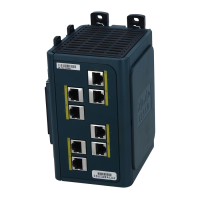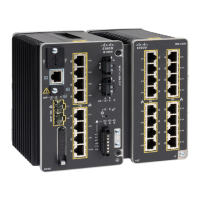529
Configuring SNMP
Information About SNMP
SNMPv3 provides for both security models and security levels. A security model is an authentication strategy set up for
a user and the group within which the user resides. A security level is the permitted level of security within a security
model. A combination of the security level and the security model determine which security mechanism is used when
handling an SNMP packet. Available security models are SNMPv1, SNMPv2C, and SNMPv3.
Table 51 on page 529 identifies the characteristics of the different combinations of security models and levels.
You must configure the SNMP agent to use the SNMP version supported by the management station. Because an agent
can communicate with multiple managers, you can configure the software to support communications using SNMPv1,
SNMPv2C, or SNMPv3.
SNMP Manager Functions
The SNMP manager uses information in the MIB to perform the operations described in Table 52 on page 529.
Table 51 SNMP Security Models and Levels
Model Level Authentication Encryption Result
SNMPv1 noAuthNoPriv Community string No Uses a community string match for authentication.
SNMPv2C noAuthNoPriv Community string No Uses a community string match for authentication.
SNMPv3 noAuthNoPriv Username No Uses a username match for authentication.
SNMPv3 authNoPriv Message Digest 5
(MD5) or Secure
Hash Algorithm
(SHA)
No Provides authentication based on the HMAC-MD5 or
HMAC-SHA algorithms.
SNMPv3 authPriv MD5 or SHA Data Encryption
Standard (DES)
or Advanced
Encryption
Standard (AES)
Provides authentication based on the HMAC-MD5 or
HMAC-SHA algorithms. Allows specifying the
User-based Security Model (USM) with these
encryption algorithms:
DES 56-bit encryption in addition to
authentication based on the CBC-DES (DES-56)
standard.
3DES 168-bit encryption
AES 128-bit, 192-bit, or 256-bit encryption
Table 52 SNMP Operations
Operation Description
get-request Retrieves a value from a specific variable.
get-next-request Retrieves a value from a variable within a table.
1
get-bulk-request
2
Retrieves large blocks of data, such as multiple rows in a table, that would otherwise require the
transmission of many small blocks of data.
get-response Replies to a get-request, get-next-request, and set-request sent by an NMS.
set-request Stores a value in a specific variable.
trap An unsolicited message sent by an SNMP agent to an SNMP manager when some event has occurred.
